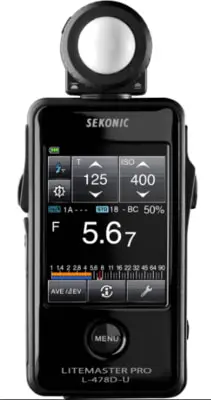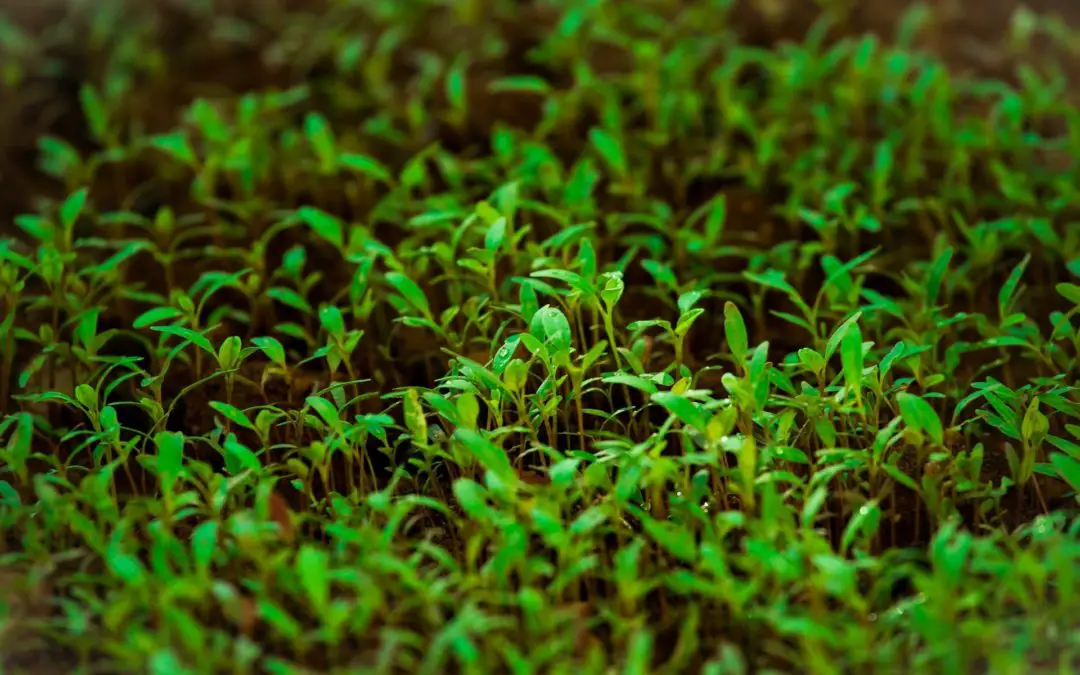If you live in a northern climate, or are trying to prioritize which plants get the prime real estate on a sunny windowsill, you’ll need some idea of how many hours of light microgreens need for robust growth.
Microgreens need at least 6 hours of natural light, or at least 12 hours of artificial light (use an inexpensive timer).
Longer light periods give plants more time to photosynthesize and create sugars. More light also encourages shorter, denser microgreens, which means more greens and less stem. Dark is part of natural growth for plants, so I believe it could be beneficial for the synthesis of certain biochemicals that could be nutritious and beneficial for humans.
Plants have diverse needs. Microgreens like sunflower prefer a lot of light, I give them 20 – 24 hours of light daily, and they’re delicious and fast growing.
Some microgreens prefer less light. These will do well with natural light in the winter, or with shorter lighting cycles if using artificial light.
- Amaranth
- Brassicas: arugula, mustards
- Lettuces
- Cilantro and dill
Another consideration is that the type of light matters. I’ve found that LED lights tend to produce darker microgreens. While this may seem like a good thing, darker microgreens have more chlorophyll, which is bitter. So depending on the flavor profile you or your customers prefer, you have some options to play with.
How does photoperiodism affect microgreen growth?
Day and night length has profound effects on plants in nature. It’s a strong signal for the seasons, and plants have evolved to adapt their growth, biosynthesis, flowering and a lot more accordingly.
Lighting is an incredibly rich source of information. Plants use it to figure out what they should be doing. For example many plants in northern climates will flower when days lengthen going into fall and winter. The sun is lower in sky. Light becomes redder and less intense because it’s filtered through more atmosphere.
Light wavelengths are one variable, but another important one is photoperiod. Which is the understanding of the length of day and night. And when artificial light sources are involved, the uninterrupted length of darkness or light.
What is photoperiodism?
 Photoperiodism is a plant’s response to variations in the duration and continuity of lighting throughout a day/night cycle. Photoperiod at its simplest just means the duration of light. But it’s more complicated than that. Plants are well adapted to sense and respond to changes in light. Light is a key signal that enables plants to be aware of changes in their environment.
Photoperiodism is a plant’s response to variations in the duration and continuity of lighting throughout a day/night cycle. Photoperiod at its simplest just means the duration of light. But it’s more complicated than that. Plants are well adapted to sense and respond to changes in light. Light is a key signal that enables plants to be aware of changes in their environment.
At the core of photoperiodism is a startling fact:
Plants can tell time. (They can also count, but that’s a different story, you can learn more about that here!)
And with the information plants have on how light is varying through time, they make all kinds of changes to what they’re up to:
- A plant may branch out bushier, or bolt
- Garlic may form bulbs, or prioritize leaves and stems
- Sympodial Orchids may form new pseudobulbs
- Leaves might change shape, size or color (like Crotons).
- Changes in microgreen yield and nutritional quality
How much light do microgreens need?
It depends on a lot of things! Not the answer you want, I know.
Here’s what I do know: courtesy of some great research from Lithuania
“ The significantly higher contents of soluble carbohydrates (sucrose, glucose, fructose) were determined in mustard and red pak choi grown under 20-24 h, in tatsoi – under 8-12 h photoperiods. The duration of 20 and 24 h also evoked antioxidant response which influenced significantly higher contents of total phenols, flavonols (index) and DPPH• scavenging activity in all microgreens species. “ Source
The research also found that longer photoperiods led to better taste!
Another conference abstract from 2018 had the following conclusion with mustard microgreens:
“ The 24 h photoperiod of LED lighting resulted in significantly lower contents of the investigated metabolites. In summary, the photoperiod of 20 h was the most suitable for growth and internal quality of mustard microgreens.” Source
So, based on the above, my recommendation is to go for 20h of lighting, with a 4h dark period.
Do microgreens need dark?

Based on the results in the above paragraph, microgreens don’t need light during growth, but they can benefit from it.
Vegetative growth is one time when dark periods seem helpful. Another is during germination.
During germination, seeds for microgreens are often soaked, then stored in the dark for a number of days. This dark period has a few benefits.
- The first, is that the blackout period is usually done in a way that traps moisture. The moisture helps more of the seeds germinate at the same time.
- The moisture also keeps the seed hulls softer for longer, so they’re more likely to come off. By having moist, soft hulls a few days into germination the cotyledons (first leaves) are more likely to pop the hulls off. Compare this with a brief soak of the seeds, then leaving them out exposed to the air.
- Adding weight. Another benefit is that it’s supposed to increase the strength of the roots. Microgreens are often grown in a 10×20 tray, with another 10×20 tray on top with weight. The idea is to keep the microgreen seedlings in the dark, but also give them some weight to lift. Pushing against the upper tray is supposed to strengthen the roots
- Weight during the blackout period helps keep the seeds in contact with the moist soil, increasing germination.
How do plants know when to flower?
 Certain plants flower when days are long or short. The plants have an internal mechanism that regulates when plants flower based on the length and quality of light they’re receiving.
Certain plants flower when days are long or short. The plants have an internal mechanism that regulates when plants flower based on the length and quality of light they’re receiving.
Plants that are triggered by shorter lengths of light during the day are called short day plants (or long night plants). Plants that are triggered by longer periods of light are called long day plants (or short night plants). It’s actually the length of the uninterrupted dark period that seems to have the largest effect on most plants. Not the length of the day.
So for example a 12 hour night, with half an hour of bright light right in the middle will cause plants to react completely differently than an unbroken 12 hours of darkness.
But light length is actually a misconception for certain plants. Plants are more concerned with the length of the night, not the length of the day!
Many experiments have been performed where flowering can be induced with an 8 hour day that’s broken up by a quick dark period. But If the 18 hour night has a brief lighting in the middle, the plant won’t flower!
If a plant required a short night (and long day) they’re called Dark-dominant. But some plants like long days and some internal queues (external co-incidence model.
Can plants tell time?
Some plants flower in the morning, morning glory’s are a great example! Plants can track the time of day using an internal circadian rhythm. Organisms have automatic internal systems that detect changes in light and temperature. Biological clock is another name for the circadian rhythms.
Things are constantly changing through the day and seasons, and plants need to behave differently during
Phytochromes are tiny molecules that detect light. The phytochromes can sense the amount and distribution of wavelengths the plant is exposed to. It will create different
Conclusion
- Plants can tell time (and count), using protein concentrations, phytochromes, and other mechanisms
- 20hours of light seems to give the best flavor
- Blackout period during germination is important for even germination, and strong roots
- More light creates microgreens with more leaf and less stem
Sources
- The effect of light-emitting diodes (LEDs) photoperiod on nutritional quality of Brassicaceae microgreens, May 2015 Conference Paper
- The impact of photoperiod on the growth an internal quality of mustard microgreens, June 2018 Conference Paper
- LED irradiance level affects growth and nutritional quality of Brassica microgreens, Central European Journal of Biology, July 2013
- The Use of Light-Emitting Diodes for Microgreen Production in Controlled Environments, Masters Thesis May 2019

I’m Alex Lafreniere. I learned a lot about plants when I built and operated a landscaping company. But, there’s always more to learn. Ever since travelling across the world, I’ve wanted to find ways to bring more tropical and exotic plants into my life. This is the site where I share everything I’ve learned with you.
This site is owned and operated by Plant Hardware, a sole proprietor headquartered in Calgary, Canada. Plant Hardware is a participant in the Amazon Services LLC Associates Program, an affiliate advertising program designed to provide a means for sites to earn advertising fees by advertising and linking to Amazon.com.Plant Hardware may also participate in affiliate programs with Bluehost, Clickbank, CJ, ShareASale, and other sites. Plant Hardware is compensated for referring traffic and business to these companies.

